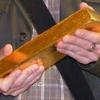The cause:
The cause of AD is an infection.
Usually the infectious agent is a bacteria 'Clamydia pneumoniea'
(pron new-moan-ee-ay)
This is not the sexually transmitted infection commonly spoken of in the
same breath as candida.
This is a related bacteria that sometimes leads to pneumonia-like symptoms.
The evidence (part 1):
Research into AD has focused for so long on amyloid plagues
that almost everyone takes it for granted that it's somehow
the 'taken-for-granted' cause.
It's not the cause, it's a red herring, focusing on it
has simply thwarted progress, however, it is a clue.
If you compare the brains of 19 (dead) Alzheimer's patients and
compare them with brains of 19 non-Alzeimer's controls,
you find that 17 of the 19 Alzheimer brains are positive for Chlamydia
pneumoniea (CP), whereas 18 of the 19 control brains are free of CP.
(source: http://www.ncbi.nlm....pubmed/9749980)
The amyloid beta-protein is an anti-microbial protein.
It's produced by the body in response to a microbial attack.
(source: http://www.ncbi.nlm....ubmed/20209079)
If you deliberately infect human monocytes with CP, it causes a pattern
of cytokine release which is consistent with Alzheimer's (in vitro)
(source: http://www.ncbi.nlm....ubmed/25540075)
CP is an airbourne disease. It's believed that it enters the body
through the nasal passages. Contaminates the nasal nerves and then
migrates through to the hippocampal areas and the spreads to deeper
cortical areas.
If you take CP and intranasally infect mice. They develop the
characteristic pattern of amyloid deposition in the olfactory bulb
and cerebum. CP causes amyloid build up in the areas it infects.
(source: http://www.ncbi.nlm....es/PMC4257355/)
This is consistent with sterotypical pattern for AD progression
in humans. It appears to start in olfactory nerves and moves backwards
into the brain before spreading into the cortical regions.
Stomach Ulcers
Before continuing with the rest of the evidence, i want to tell you
about the peptic ulcer story. Several decades ago, there was a huge
and very profitable industry selling 'stomach ulcer' drugs and
performing expensive (and usually unsuccessful) surgerical procedures
to remove sections of stomach tissue. Big Pharma was happy. Big 'Med'
was happy. People were cashing in. Then one day two Australian
doctors started publishing papers and writing to medical bodies
saying they'd found the solution to the stomach ulcer problem.
It was a simple bacteria called helicobacter pylori.
Stomach ulcers could be defeated with a simple antibiotic.
Were Big Pharma and Big 'Med' delighted at the news ?
Were the two Australian doctors embraced as heroes into the bossom
of the medical establishment?
Err...No. And No.
Review papers emphasised the established consensus causes:
'stress', 'overwork', 'cigarettes and alcohol', 'rich food' etc.
It was argued that these bacteria were _not_ found in ulcer patients
and these bacteria _were_ found in patients without ulcers.
(bullshit, of-course)
The Australian doctors were Barry Marshall and Robin Warren.
They were simply and quietly ignored and contradictory papers came
out to muddy the waters so that others doubted their claims.
One of the doctors infected himself with the bacteria, demonstrated
the classic stomach ulcer symptomology in himself, recorded all this on
video for a documentary, and then cured himself with a simple antibiotic.
Even after that, stomach surgeries were still performed, ulcer drugs
were still being sold. It took years, before antibiotics became the
preferred treatment for stomach ulcers.
All that needless human suffering in the name of profit.
There's a documentary about all this floating around on the internet,
somewhere... alas, i couldn't find it. (If any reader knows where this
documentary is, please let me know).
From the point of view of Big Pharma and Big 'Med' the prospect of
publishing some contradictory research evidence is, apparently,
an easier pill to swallow than losing millions in annual revenue.
The evidence (part 2)
The hero of the Chlamydia Pneumoniae story is Professor
Brian Balin.
A summary of his progress up to 2004 was the subject of an
article in the Economist
(source:http://www.economist.../node/2521224/)
This article is provided in toto below:
Alzheimer's disease Barking up the wrong tree?
ALZHEIMER'S disease is a problem of old age. In America, there is about
a 50% chance that an individual will have developed it by the age of 85.
As people live longer, its prevalence rises, and so does the incentive to
find out how it works and treat it. But although the changes in the brain
that accompany Alzheimer's memory loss are being disentangled, the
underlying cause remains mysterious.
Most research has proceeded on the assumption that this cause is internal,
either genetic, or a side effect of the general wear and tear that accompanies
ageing. But a few years ago, Brian Balin of the Philadelphia College of
Osteopathic Medicine looked at the brains of 19 people who had died of
Alzheimer's and compared them with 19 people of the same age who had died of
other causes. All but two of the Alzheimer's brains had something in common:
they harboured a bacterium known as Chlamydia pneumoniae. Only one of the
non-Alzheimer's brains had this bug in it. That observation raised the
possibility that sometimes, at least, Alzheimer's is caused by an infection.
This is a controversial idea. But research that is about to be published in the
journal Neurobiology of Aging, by Dr Balin and his colleagues, suggests it
might be right.
The problem with the original observation was that Chlamydia is maddeningly common.
Typically, the bug causes mild pneumonia, a persistent cough and a low-grade fever.
Half of all people in their 20s have been exposed to it, and almost everyone has
crossed the bacterium's path by the time they reach old age. Finding evidence of
Chlamydia in brain tissue from an autopsy therefore means little. Nor does the
apparent correlation with Alzheimer's prove anything. It might simply be that
brains which are riddled with the “amyloid” protein plaques which characterise
the disease are also more susceptible to infection.
However, the idea that common pathogens are the culprits behind several diseases
that have not previously been thought of as infections is gaining ground. A
bacterium called Helicobacter pylori, for example, is now believed to be the
main cause of stomach ulcers. And Chlamydia itself has possible (though disputed)
links with heart disease.
To gather evidence that Chlamydia might be causing Alzheimer's disease, rather
than merely profiting from it, Dr Balin decided to see if the bug could induce
Alzheimer's-like symptoms in mice. He and his colleagues chose a kind of mouse
that does not naturally develop amyloid brain-plaques. They then sprayed a
strain of the bacterium that had been harvested from human Alzheimer's patients,
up the mice's noses.
One to three months after doing so, Dr Balin killed his mice and examined their
brains. All the animals had developed plaques. Moreover, the longer an animal
lived after the initial infection, the more plaques it had, and the larger they were.
Dr Balin and his team therefore think that Chlamydia may indeed be a trigger for
Alzheimer's. Their working hypothesis is that the low-grade infection causes
inflammation, which in turn causes the amyloid to start gumming up. (It is well
known that people who have taken a lot of anti-inflammatory drugs during their
lifetimes are less likely to suffer from Alzheimer's than others.)
That hypothesis is taken further in another paper about to be published—this time
in the Proceedings of the National Academy of Sciences, by Jeffery Kelly of the
Scripps Research Institute in San Diego and his colleagues. One consequence of
inflammation is the production of ozone, a highly reactive form of oxygen. This,
in turn, reacts with normal body chemicals such as cholesterol, to produce poisons.
Among these poisons are a group of chemicals called atheronals. Dr Kelly has now
shown that atheronals can, at least in a test tube, trigger the sort of misfolding
in amyloid proteins which is believed to lead to the formation of plaques. He has
also found atheronals in the brains of Alzheimer's patients, although they exist in
people of similar age who have not had Alzheimer's, as well, which weakens the
theory somewhat.
Nevertheless, the pieces are coming together. Dr Balin is not claiming that
Chlamydia is the only thing that can trigger the inflammation that leads to
Alzheimer's. But his work suggests that it might be a common trigger. If he is
right, the implications could be huge. The surgical removal of stomach ulcers was
once a major industry. Now, sufferers are given a course of antibiotics. If a
similar treatment could deal with Alzheimer's, a healthier old age might be
bought in the same way.
Given that Economist article appeared in 2004, why hasn't Professor Balin been
given a multi-million dollar research grant ?
Why do we not have a vaccine to the Chlamydia Pneumoniae(CP) bacteria ?
Surely, if we can demonstrate that AD symptomology can be experimentally
induced in mice with CP ... and we find the CP bacteria in the brains of
deceased AD victims (and not in the brains of non-AD sufferers) then
shouldn't Balin be given funding to pursue his research in monkeys ?
Why has nothing changed in the last 11 years ?
Research Questions:
(1) There is a strong correspondence between type Type 2 Diabetes (T2D) and AD symptoms:
=> We find amyloid plaques in the pancreas of T2D patients.
=> We find T2D leads to neuropathy and cognitive & memory deficits.
=> We find that high blood sugar is an early marker for AD, and that
AD suffers very often have insulin insensitivity.
=> We find evidence that T2D patients develop AD with a high frequency.
Given this: do we find CP in the brains and pancreas of T2D patients ?
(2) Is Chlamydia Pneumoniea similar to it's sister bacteria, chlamydia trachomatis,
in that it prefers, and proliferates, in an acid and high blood sugar environment ?
Might this explain the recent explosion in both diabetes and AD rates in China
and Japan (where both populations have heavily increased their meat consumption and
significant reduced their rice consumption) ?
Hence, might we control AD with a low sugar, vegetarian (and/or alkali) diet ?
(3) We know that glycotoxins are massively increased in a diet that:
(a) has animal products
(b) is cooked.
The japanese and chinese populations have moved to a diet with a
higher glycotoxin load in recent decades... and experienced dramatically
higher rates of T2D and AD.
Could a higher glycotoxin load undermine the immune system in
a way that facilitates the proliferation of CP ?
Resources:
If you would like to know more about Professor Balin, here are his details:
http://works.bepress...in/doctype.html
Professor, Dept. of Pathology,
Microbiology, Immunology and Forensic Medicine
(His published papers are listed there)
Here's a detailed paper (2012) by Prof Balin entitled:
'Evidence for an Infectous Etiology in Alzheimer's Disease'
http://cdn.intechope...fs-wm/25201.pdf
There is a non-profit website for CP sufferers:
http://cpnhelp.org/ ...help.org/
Playground.
Edited by playground, 25 June 2015 - 09:54 PM.


























































